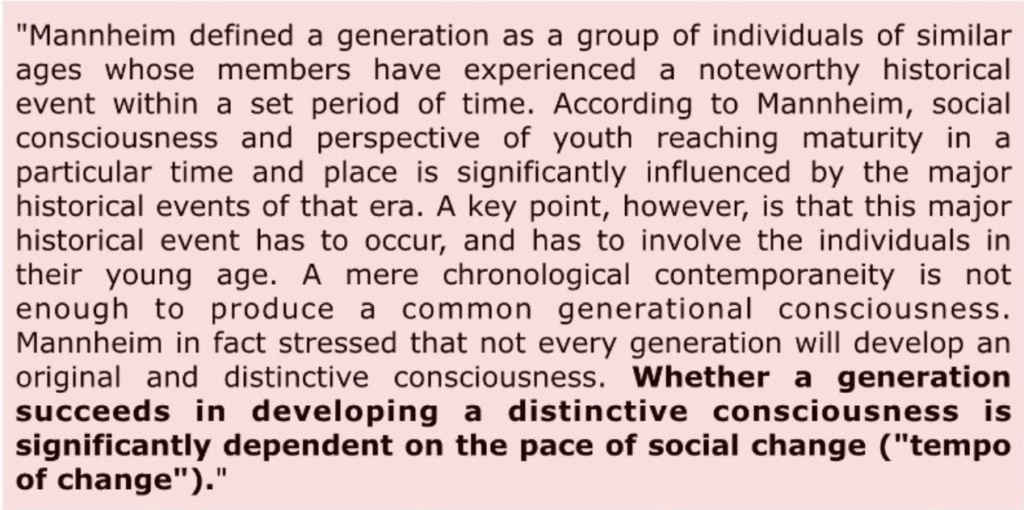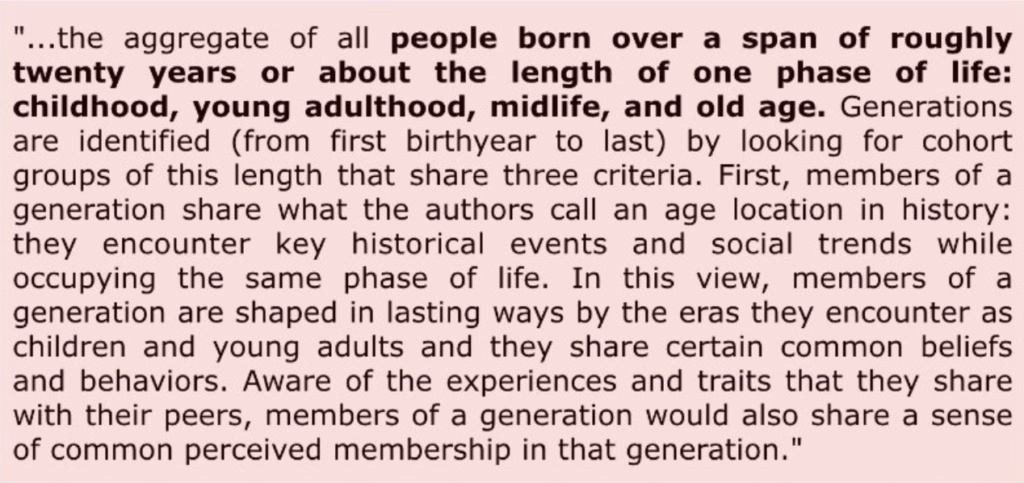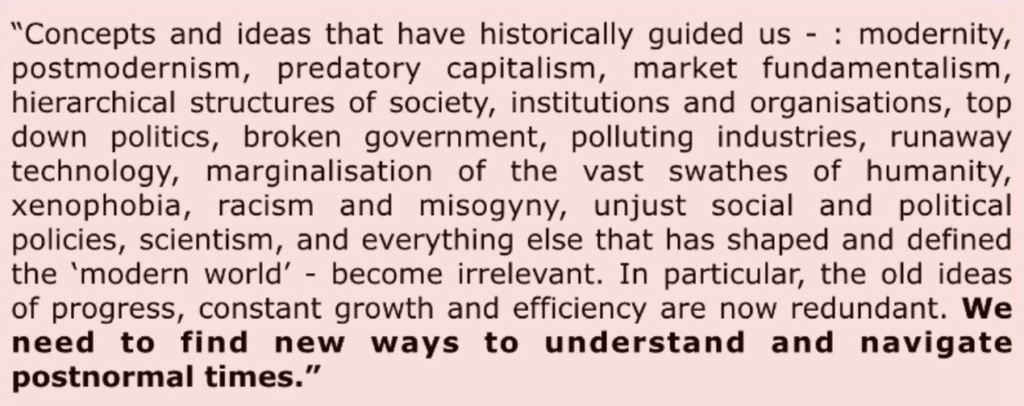Postgenerational Transformation: Everything You Know About Generations At Work Is Changing

According to Amazon, you are most likely familiar with the concept of generations in the workforce or “generational warfare” all too well. When you search for books on their website using the phrase “generations at work,” you will find over 39,000 entries. And yet, with all of that information at our fingertips, we still don’t know how to effectively manage the clash of generational differences in our organizations.
Now, just when you thought that you had successfully memorized the human bingo card of Boomers, Xers and Millennials, along comes an emerging landscape that will either have you jumping for joy or throwing your hands up in despair.
Whether you are aware or not, today’s traditional understanding of generations in the workplace originates largely from two popular theories. The first was developed in 1923 by sociologist Karl Mannheim in his work entitled “The Problem of Generations.” (Yep, the issue was framed as a “problem” a long time ago.) His seminal work on generations noted the following:

Besides noting that generational distinctiveness is dependent on the pace of social change, Mannheim also stated that members of a particular generation were stratified by their physical location, culture, and even class, and this stratification caused members to see the world differently and lack generational homogeneity.
The second theory comes from William Strauss and Neil Howe, and was popularized in their books Generations (1991) and The Fourth Turning (1997). Basically, the duo stated that a generation was:

Both Mannheim’s and Strauss/Howe’s generational theories seemingly do a great job of explaining socio-cultural change and differences in the eras leading up to and through the Industrial Age. But do these generational theories work as well in the present environment of constant change and the emerging landscape of increasing complexity?
To begin answering that question, let’s take a quick look at three “post” concepts:
Postmaterialism is an idea developed by Ronald Inglehart in the 1970’s that recognized the growing shift away from material goods to values that centered around autonomy and self expression. Though this could very well denote the shift to a new generation, these values have been impacting all age groups as manifested by the trends of personalization, authenticity and creative collaboration.
Postdisciplinarity is gaining popularity as social scientists and professionals from across domains highlight that the exponentially accelerating changes in technology, social innovation and organizational practices are leading us into a world where boundaries and silos fail to serve human development. A growing number of conferences, businesses and academic programs are touting a postdisciplinary approach with each passing year.
Postnormal is a framework developed by scholar Ziauddin Sardar that describes the unique aspects of the turbulent, ambiguous and volatile world in which we now find ourselves. Based on the concept of “post normal science” in which “facts are uncertain and values are in dispute,” the postnormal economy is characterized by an atmosphere of chaos, complexity and contradictions that cause “normal” to evaporate.

Each of these “post” ideas loudly proclaim that we have entered an era of exponential complexity, accelerating transformation and increasingly shorter intervals of change. So what does this mean for generational theory? Let’s ask Mannheim, Strauss and Howe.
Mannheim: “Whether a generation succeeds in developing a distinctive consciousness is significantly dependent on the pace of social change.”
If Mannheim could have seen our postmaterial, postdisciplinary and postnormal world, what would he have to say about the pace of change and the ability for a distinct generation to form?
Strauss and Howe: “A generation is the aggregate of all people born over the span of roughly twenty years or about the length of one phase of life.”
Twenty years? Maybe that concept worked in the 1990’s. However, twenty years in today’s environment will see more technological, social and governmental change than the early adopters of generational theory could have imagined taking place in a century! In such a world, how can a distinct generation only emerge every twenty years?
If generational theory as it is practiced today is to be believed, then we will have new generations popping up every few years. Soon, we will have 10 or more generations existing simultaneously in the workplace. Thankfully, this is not necessarily the case. As we enter a new era of increasing complexity and change, a postgenerational cohort is emerging. Empowered by open-source systems, peer-to-peer architecture, social media, blockchain software, collaborative consumption, participatory cooperativism, decentralized autonomous organizational models, mesh networks, mirror cities, flux innovation and augmentation technologies, this “Post Gen” cohort is transcending workplace warfare and the generational divide by connecting around like-passions, virtual and digital communities, human-centric solutions and crowd-sourced innovation. Post-Gen can be seen in the development of new educational models, business platforms and transdisciplinary endeavors to solve big world problems.
In other words, we are entering an era in which the rules around traditional generational theory do not apply. The new “Post Gen” landscape is blurring the lines between distinct generations in terms of experiences, values and activity. The reason that you are continuing to experience generational warfare at work is most likely due to your antiquated organizational and leadership models that do not reflect the environment of convergence, meshing, and the “unsiloing” of ideas and interaction.
If increasing complexity scares you, then our new landscape of change is your worst nightmare. However, if the idea of trading generational warfare for a postgenerational transformation gives you hope, then this new world of increasing complexity is better than 39,000 books combined!

Frank Spencer
Co-Founder
Creative Director
In 2009, Frank founded Kedge – a global foresight, innovation, and strategic design firm which pioneered TFSX. Throughout his career, Frank has worked as a leadership coach and developer with entrepreneurs, social communities, networking initiatives, and SMEs, helping them in areas such as development, innovation, and networking.
Read More
